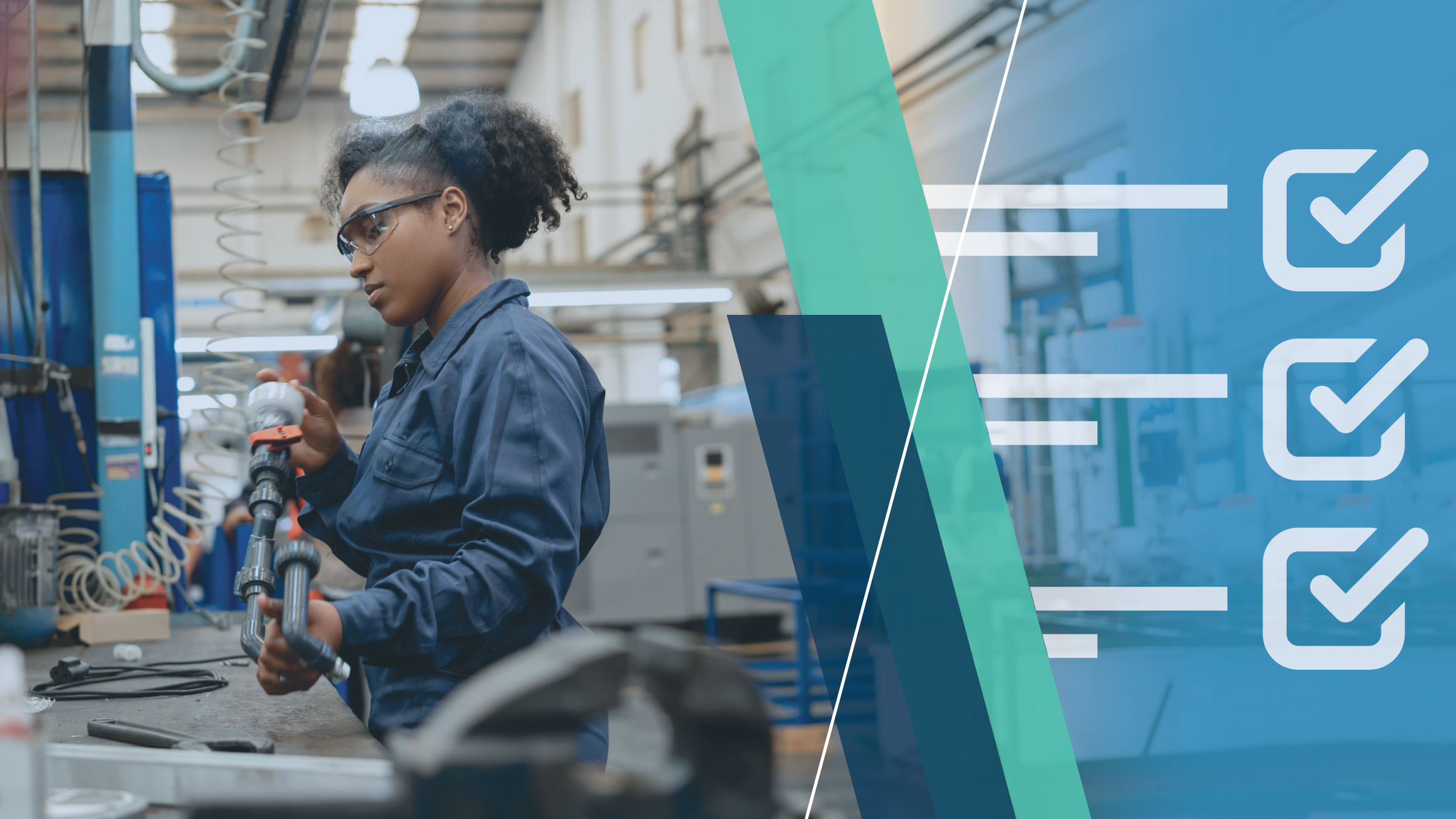When it comes to water and sewer lines, polyvinyl chloride, or PVC, has long been the material of choice because it’s inexpensive and lasts a long time. But since about spring 2021, Twin Cities-based Rachel Construction has suggested its clients consider ductile iron, which costs more and is more vulnerable to corrosion.
That’s because there’s a shortage of PVC pipes nationwide, which has led to higher prices and longer wait times that can impose unacceptable delays in the Upper Midwest’s short construction season, according to Rachel Vice President Dave Lyste. Most clients have agreed to the changes, he said.
With supply chains still not caught up with the abrupt changes in consumer demand at the start of the pandemic, businesses throughout the Ninth District have had to find a lot of work-arounds to get by. Some stockpiled supplies when they could. Some sought alternate vendors, even buying retail when wholesalers proved unreliable. And some got creative.
“We’re kind of being forced to put on our thinking hats,” Lyste said. “The companies that have been more successful through [the pandemic] are the ones that have done that. They’ve been able to shift gears from one process to another one, one material or one approach to another.”
A January survey of nearly 400 Ninth District businesses by the Minneapolis Fed found that more than a third considered the availability of supplies among their top challenges. (The survey was not a random sample and may not be fully representative of business conditions.) Nearly half considered price increases for nonlabor inputs, such as material costs, among their top challenges (Chart 1).
“This has been the worst last couple of years,” a refuse hauler in Greater Minnesota lamented. “I am not sure why anyone in their right mind would want to go into business now. Yes, we did get some aid during this pandemic, but it is definitely not enough to cover the price hike of everything.”
Skyrocketing prices
Since about fall 2020, the prices of goods and services purchased by businesses have risen almost continuously, according to the Producer Price Index, or PPI (Chart 2). On average the prices of raw materials, such as grain and coal, have increased by about 40 percent. Processed materials and manufactured components, such as jet fuel and semiconductors, have increased by about 30 percent. Business services, such as bookkeeping and freight, have increased by about 10 percent.
In the Ninth District, the construction sector has been one of the hardest hit, based on survey responses.
“It's been the single biggest thing that's affected the construction industry over last couple years,” Lyste said. Prices for PVC pipes, a key supply for his firm, have skyrocketed to “levels we’ve never seen before,” he said.
According to the PPI, PVC and other plastic pipes have increased in price by about 60 percent since fall 2020. Supplies have become even more constrained since August 2021 when Hurricane Ida temporarily forced the closure of plastic manufacturers concentrated along the Gulf of Mexico, according to trade publications.
A vast majority of Ninth District businesses have seen price increases for nonlabor inputs, primarily supplies and freight, and a rising share have seen significant increases, according to the Minneapolis Fed’s business surveys (Chart 3).
All kinds of supplies have been affected, from steel to HVAC equipment, to chicken wings, to wooden stakes used by surveyors to mark the ground.
A Northwest Minnesota surveyor reported that it’s to the point “where we can't recover the wild swings in prices from our clients, forcing us to operate at a break-even or loss.”
Some supplies just aren’t available
Besides high prices, some supplies just aren’t available to purchase at any price when businesses need them.
Delays of months or even years are not unheard of, according to the Minneapolis Fed’s January survey. A third of respondents described their ability to receive critical supplies as significant to extremely difficult. Another half said it was modestly to moderately difficult.
Unable to buy parts for their trucks, the refuse hauler in Greater Minnesota reported doing “makeshift” repairs just so they can continue to make their rounds. Unable to get semiconductors for control units for four months, an industrial equipment manufacturer in Wisconsin reported that it may have to push back projects scheduled for this summer into next year.
“It’s getting to a point where we can’t even just pay more for the material. It's that we can't get it,” Mat Boie, a sales representative at Wells’ precast concrete plant in the Twin Cities, said at a recent discussion on supply chains hosted by the Minnesota Construction Association.
He and others in the industry said the long wait times for supplies combined with unpredictable price increases have made it difficult to provide accurate pricing for clients. “With lead times and everything else, you're trying to plan out for a year instead of typically three to four months,” he said. “How do you account for that inflation?”
“A layered crisis”
It’s been two years since supply chains were disrupted by the pandemic and the economic changes that followed, but there has been little improvement.
Best Buy CEO Corie Barry described it as “a layered crisis” in January at a Minneapolis Fed conference on the regional economy. Businesses have had a hard time adapting to the changes, she said, because the different layers don’t always rise and fall at the same time.
One of those layers is the large, unexpected changes in demand as a result of the pandemic.
For Barry’s stores, it has meant increased spending on consumer electronics with so many people staying home to avoid COVID-19 exposure instead of spending money on restaurant meals and vacations.
For the construction industry, an increase in online purchasing along with businesses stockpiling supplies to hedge against future shortages have led to a boom in construction of new warehouses and distribution centers. That has contributed to a shortage of steel joists, precast concrete walls, and insulation panels, according to Pete Hayes, president of Menomonie, Wis., based Red Cedar Steel and a speaker at the MCA event.
Another layer addresses manufacturing capacity, which has not caught up with demand. Manufacturers in the Minneapolis Fed survey said that, like other businesses, they, too, are hamstrung by the availability of workers and supplies.
“We import [supplies], which now takes at least three times as long,” a Twin Cities manufacturer reported. “We struggle to get trucks to show up for their pickups. And we are unable to get space on trains or planes.”
At the Wells plant, Boie said, labor has been a challenge, with fewer job applicants, some workers not showing up for work, and others quitting. Such challenges are exacerbated when existing workers are exposed to COVID-19 and must quarantine for days, he said.
A final layer is shipping, an industry that also faces severe challenges, from difficulty hiring truck drivers to snarled-up container ports.
“Container costs have gone nuts,” a Twin Cities distributor of construction material reported. “What used to cost $4,000 to $5,000 is now $18,000 to $20,000.”
Adapting to uncertainty
Despite the ever-shifting challenges, businesses are trying to adapt.
A Twin Cities art instructor reported looking for alternate vendors after her usual vendors were unable to guarantee timely delivery of 200 to 400 canvases every couple of weeks. The owner said in the Minneapolis Fed’s January survey that she ended up paying higher prices at retail stores.
Businesses are also planning ahead to avoid shortages. A Wisconsin retailer reported stockpiling inventory because its main suppliers are capping the number of items that can be ordered. A Dairy Queen in North Dakota, anticipating delays in getting replacement parts, has been replacing all its old equipment. “If any major pieces of equipment were to fail, there is concern we'd have to shut down completely for a significant period of time,” one of the owners said.
Some businesses have changed the way they normally operate.
At Red Cedar Steel, Hayes said his ironworkers have changed the sequence of warehouse construction when waiting on precast concrete walls. Normally, these load-bearing walls go up first before the interior steel framing. Now, rather than waiting for walls to be delivered, ironworkers erect framing where they can in the core of the building and finish up when the walls are in place.
Ultimately, it’s helpful to communicate the uncertainties of the supply chain to customers, according to Chad Rempe, a preconstruction design manager at Kraus-Anderson, a Twin Cities general contractor, and speaker at the MCA event.
He said he’s stopped trying to guess where inflation will be and just admit to customers he doesn’t know. Then, he said, he works out an agreement with the customer on how they’ll reconcile higher than expected prices in a fair way when that happens. “That's probably the fairest route to take. You do it as a team, and if you're wrong you're wrong together. But no one person is shouldering that full burden.”
Tu-Uyen Tran is the senior writer in the Minneapolis Fed’s Public Affairs department. He specializes in deeply reported, data-driven articles. Before joining the Bank in 2018, Tu-Uyen was an editor and reporter in Fargo, Grand Forks, and Seattle.






